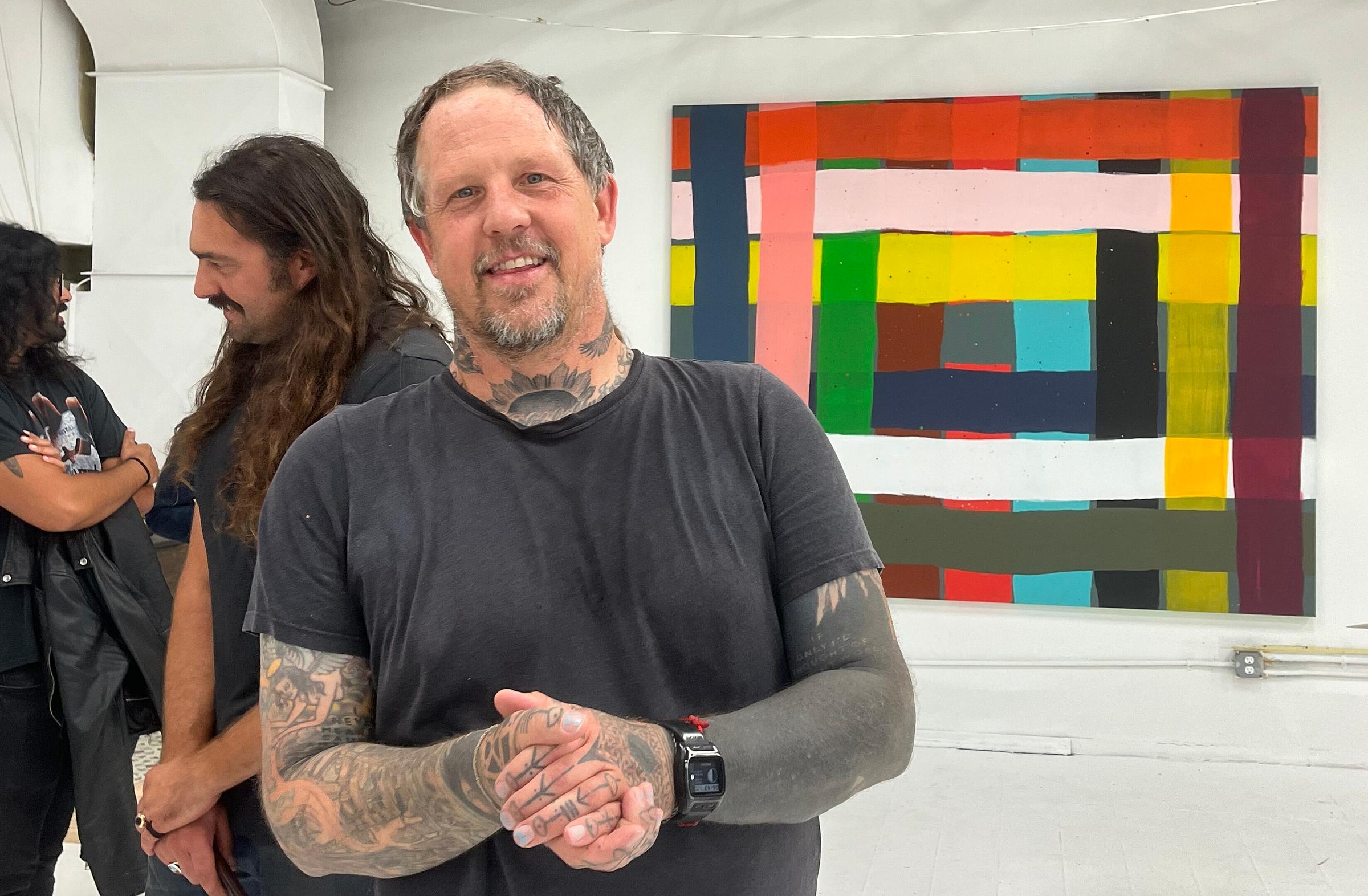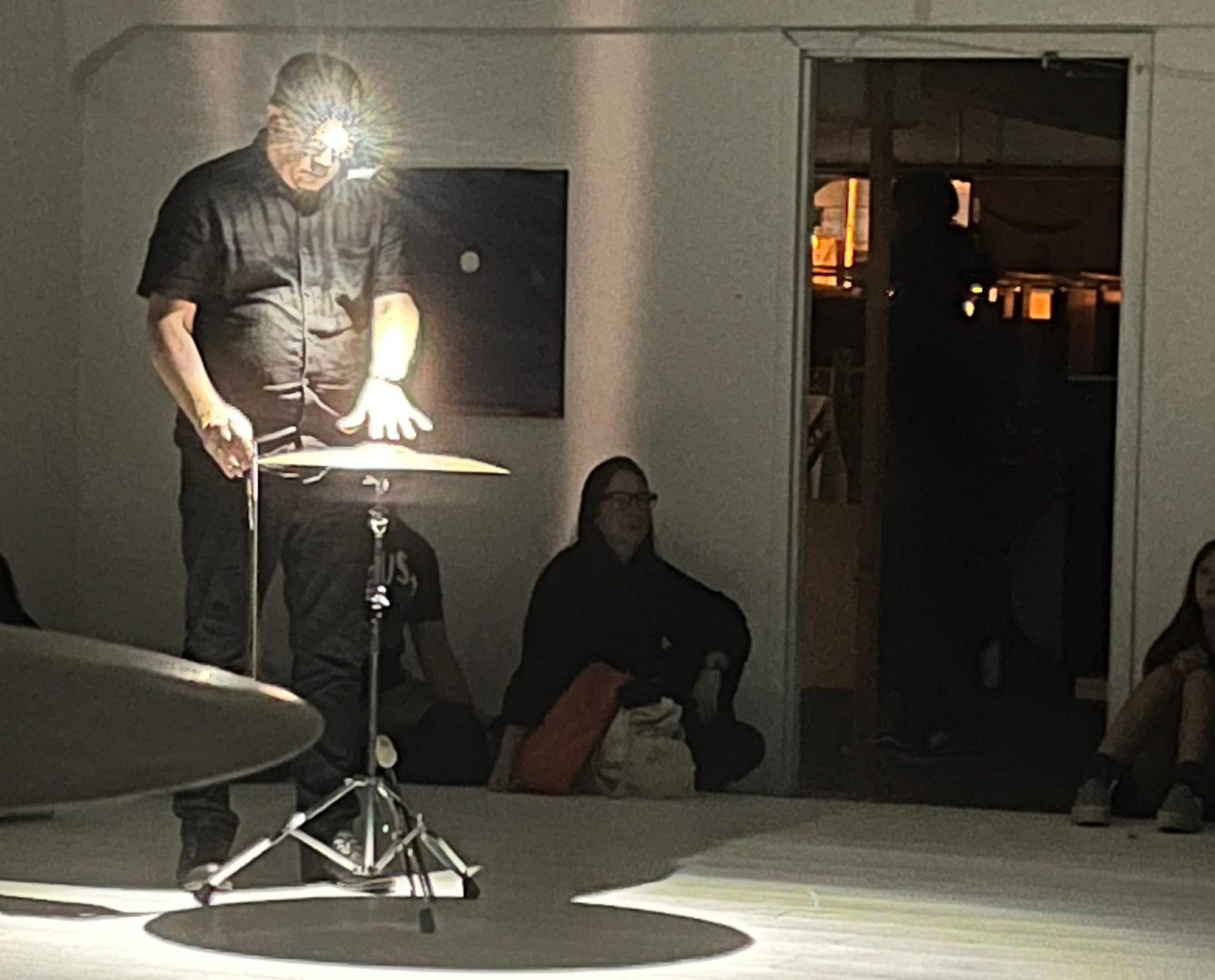“12 Symbols” directed by Christoper Robin Duncan
“Where You Need to Be: Teleportation Studies” by Solée Darrell
“The Space Between Years” by Christopher Robin Duncan
Pt.2 Gallery
1523b Webster St.
Oakland
July 13, 2024
The thing about art performance synopses is that they never quite capture the performances’ true spirit. Based on Pt.2 Gallery’s description of 12 Symbols for the closing night of exhibits of works by Solée Darrell and Christopher Robin Duncan, one that “…combines light, shadow, and sound to ponder the ideas and nuances of time,” I had low expectations, anticipating it would be a kind of hippie drum circle jam.
I couldn’t have been more wrong in that assumption. It was excellent, refined and mesmerizing. Beautifully structured and elegant in both its music and thoughtfully simple choreography, it held me and my partner rapt. And so, my doubting cynicism was banished by the piece’s lovely, sonically sophisticated spell.

But it wasn’t the performance we wanted to see, exactly. We showed up early because we wanted to check out Darrell’s intriguing dye-on-silk pieces, “Where You Need to Be: Teleportation Studies,” and take a look at the show in the space adjacent to it, “The Space Between Years” by Duncan, who also directed of the performance.
Darrell’s pieces delivered in glorious, intentionally unfocused color. Her paintings are at once rudimentary and complex, due in no small part to the silk velvet she uses as her canvases.
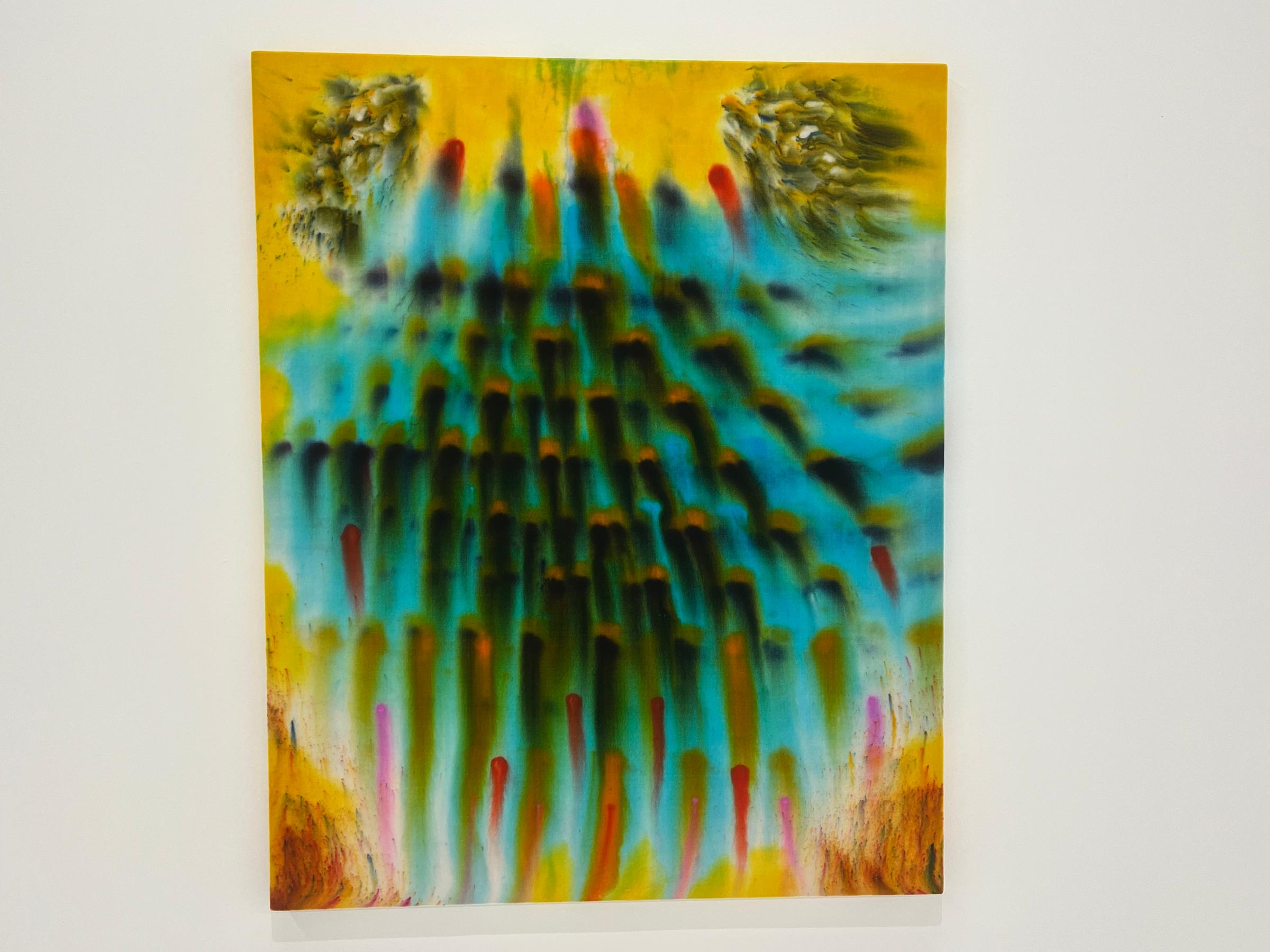
Although all her pieces are strikingly vibrant, works like “Where have you been?” and “Free, Free, Free” were particularly lively. One’s eye can’t rest comfortably in her well-composed color fields. They’re stasis-in-motion, the silk velvet blurring Darrell’s dyes and providing a subtle texture that almost confuses one’s visual focus. The fact that the space her work was exhibited in was brilliantly lit by intense fluorescent lights lent even more dazzle to the paintings.
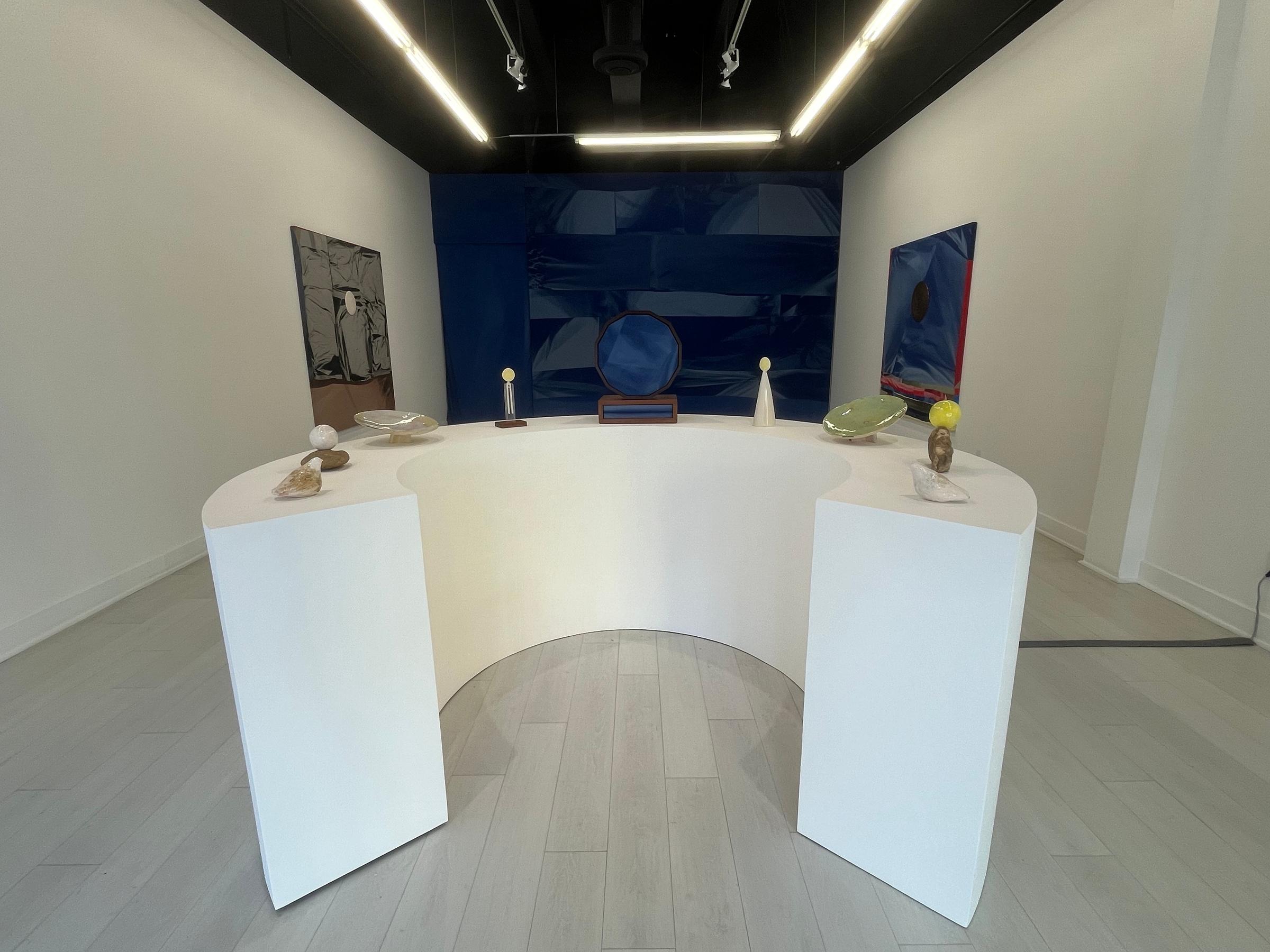
The brightly lit gallery displaying Darrell’s work was decidedly different than the space occupying Duncan’s works, which were deeply solemn. Arranged on a large, arc-shaped podium were Duncan’s small glazed ceramic and porcelain pieces, each mysteriously oblique, like artifacts from an ancient alien excavation.
In the middle of them was a crafted wood-and-fabric speaker, “Sound in Time,” which emitted faint, ethereal reverberating sounds, equally mysterious.
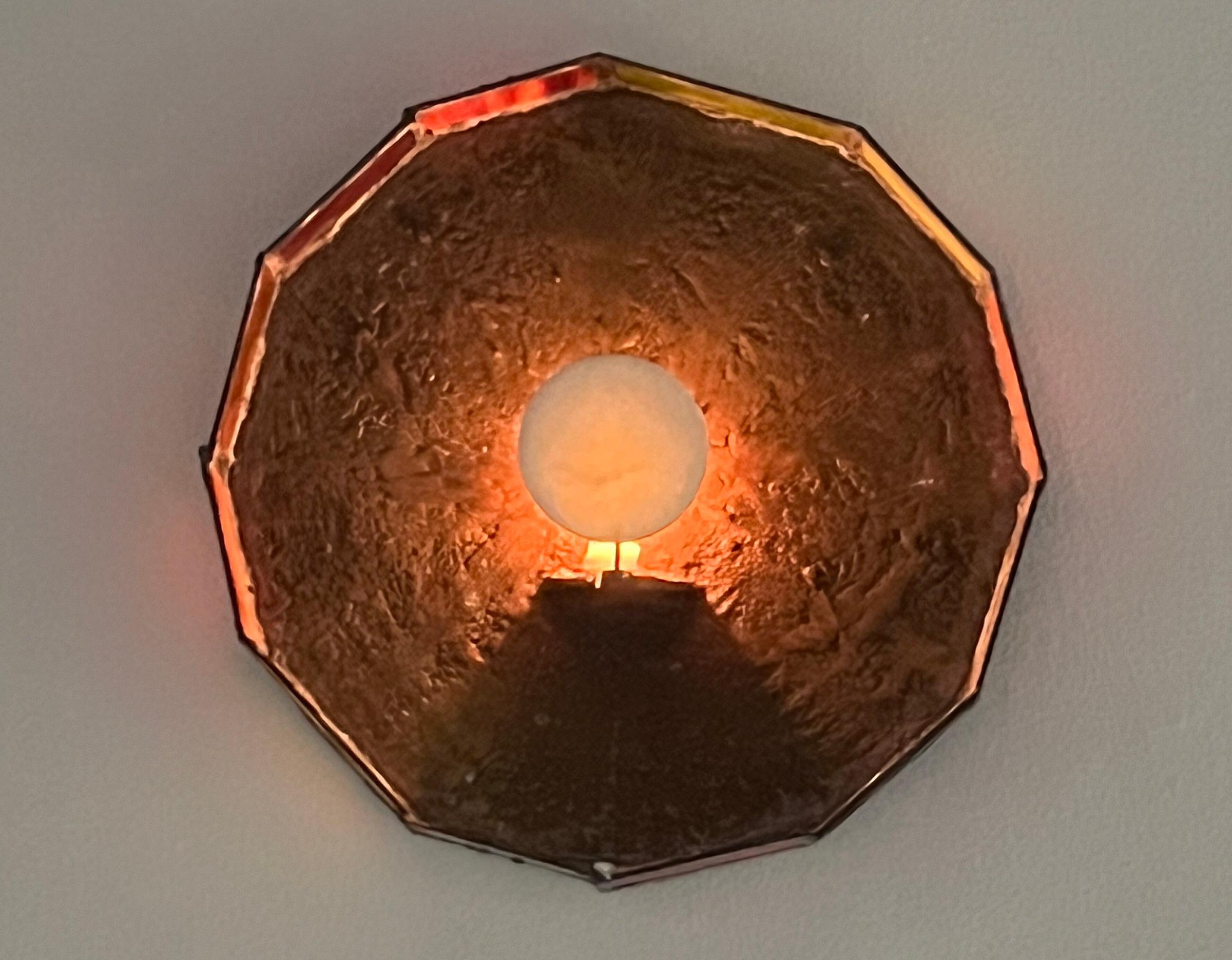
A few of his painted fabric and thread paintings were displayed in the space, but through a curtain was a portal to a larger, darkened space where more of Duncan’s work was shown. The darkness augmented his cryptic sculptures and paintings, one of which, “A Light in the Darkness” — made of bronze, glass, and resin — was lit by a candle set within it.
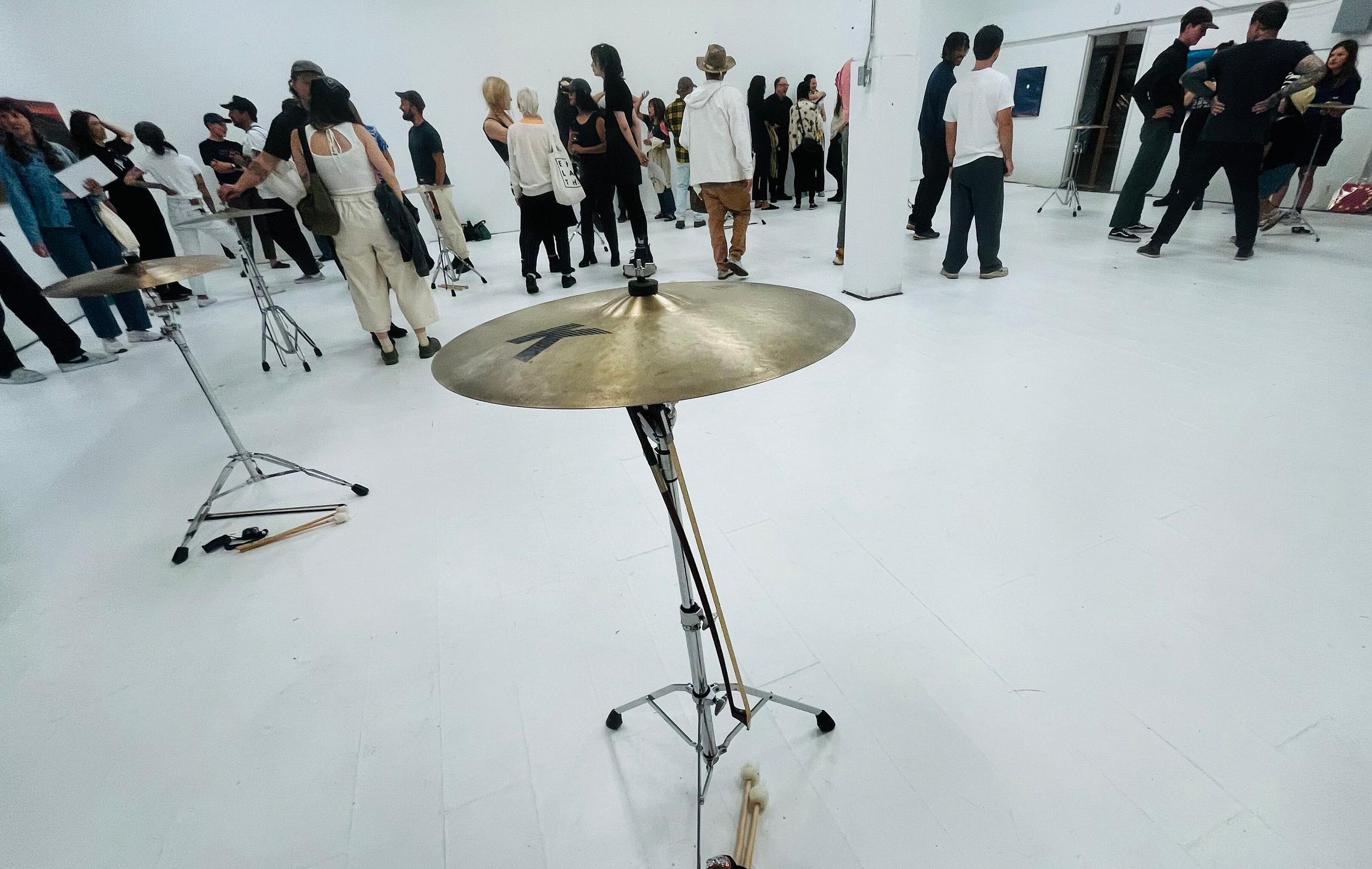
People had begun showing up for the performance. We followed as they trickled in through the darkened part of the gallery and down a labyrinthine passage that led to a huge, windowless space, blindingly lit. Many of the room’s drop ceiling tiles were either broken or missing, giving the space a kind of post-apocalyptic vibe. It was hot and stuffy and the room got hotter as more people arrived. Arranged in a circle were 12 different sized cymbals on stands.
While we waited for the performance to begin, I spotted an electric typewriter on an antique-looking little table atop a tile covered plinth. At the press of a button, the typewriter began typing the words “Es imposible regresar al país de la memoria” (It is impossible to return to the country of memory) on a long scroll of paper that curled on the floor. It was a piece by Liz Hernandez, an artist from Mexico City based in Oakland.
People sat on the floor, against the walls and the square column in the middle of the room. My partner and I were able to snag seats on the sole small bench. The musicians took their places and Christopher Robin Duncan introduced 12 Symbols, saying that the cymbals were symbols of the sun and the moon and how they can fill-up space. The piece was first performed in 2014 in the Berkeley Art Museum’s former space — a beautiful brutalist building I loved — as part of a show called “The Possible.”
Then the lights were off. Only the light from Duncan’s headlamp shone in the darkness, the other performers clad in black. He began playing his cymbal with a violin bow, its shadow undulating eerily on the floor. The sound was equally eerie and beautifully meditative, reminiscent of a Buddhist singing bowl.
Slowly, gradually, the other performers switched their headlamps on one by one and began playing their cymbals with bows, the floor becoming a shadow dance of round shapes that fluttered and oscillated. Over the course of the performance the bows gave way — again, one by one — to felt-tipped percussive mallets, until the dark space vibrated in a deafening roar of cymbal-crash and whirling shadows that flew around on the floor, the cymbals’ golden reflections shining on to the strange, gap-toothed ceiling.
After the blaring crescendo, the cymbalists gradually quieted for the piece’s denouement, each in turn, switching off their headlamps as they silenced their cymbals until just one was left. And then, when that cymbal went still and the last headlamp switched off, the piece concluded with a silence made just as loud as the climax by the contrasting lack of sound. Beautiful.
When the lights went up the abrupt brightness was visceral: everyone blinked in shock that the hour-long trance they’d been in was so violently interrupted.
We shall not soon forget “12 Symbols.” It was captivating. My initial doubts about what I assumed it would be were smashed like the crash of a cymbal. Bravo!
